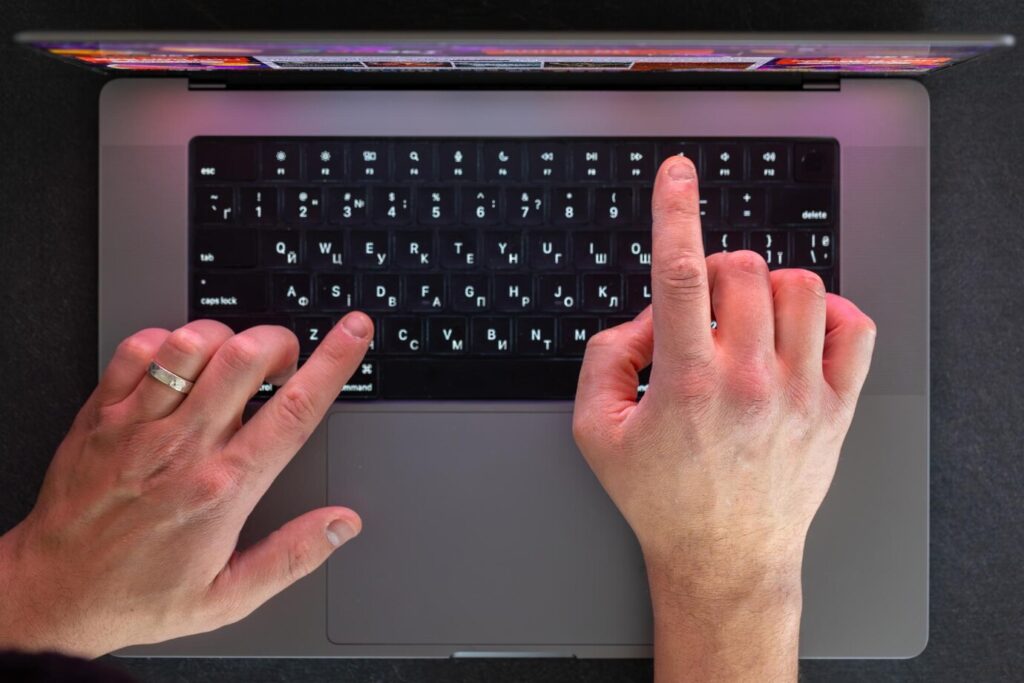keyboard Not Working, an unresponsive keyboard, physical or digital, can greatly slow down productivity and communication. Keyboards play a role in everything from writing emails to entering commands on computers, tablets, or phones. If your keyboard ceases to work, enters incorrect characters, or slows down, it will prove to be very infuriating. If you use a laptop, desktop, external wireless keyboard, or touch keyboard on a phone, the problem might result from one or more common issues.
Keyboard malfunctions may be caused by software glitches, incorrect configuration, hardware malfunctions, or basic reasons such as dirt and grime accumulation. To use the right solution, it is important to identify the underlying cause. In some instances, all that is needed is to restart your device or to reattach an attached Bluetooth keyboard. Other instances might require you to reset keyboard configuration or to update your operating system.
This guide specifies all possible reasons for keyboard malfunctions as well as reset instructions to resolve keyboard malfunctions. By adhering to an easy-to-follow step-by-step process, you’ll be able to resolve your keyboard effectively—whether it’s on Windows, macOS, Android, or iPhone. Let’s first know why your keyboard is not working as it should before moving on to resetting it to get it working again.
Causes of Keyboard Not Working:
- Dirt or Physical Obstruction: Dust or debris trapped underneath the keys can cause physical malfunctions with the keyboards. Turn the keyboard upside down and give it a gentle shake or blast with compressed air in case of tightness.
- Loose Plugging or Disconnection: Loose connections or damaged cables can prevent a wired keyboard from working. Ensure that the USB or lightning connector is firmly plugged in and check for any visible damage to the wire.
- Battery or Power Problem (Wireless Keyboard): A wireless keyboard would need batteries or charging. A keyboard with low battery may not respond at all. Change or recharge the batteries and check if the keyboard is powered on using the keyboard’s power switch.
- Bluetooth Not Connected (Wireless Keyboard): If Bluetooth is used, check that Bluetooth is enabled and the keyboard is paired. If it is not working, try pairing it again from Bluetooth settings.
- Software Glitch or Freeze: Sometimes, while using a keyboard, if your computer or mobile device is frozen or there is a software glitch, it can get temporary inputs disabled. Restarting your device will clear the memory.
- Incorrect Keyboard Layout or Language: The keyboard layout setting may have been changed. Check Settings > General > Keyboard > Keyboards to ensure the language and layout match your current preferences.
- Drivers Are Outdated (Windows/Mac): Outdated or corrupt drivers can stop your keyboard from functioning. Make sure to update your drivers. Windows users update through Device Manager, and Mac users through System Preferences.
How to Reset a Keyboard Not Working:
Step 1: Restart Device:
- Whether it is the computer or the phone, restarting gets rid of the temporary glitches that affect keyboard input. Shut the device down, power it up again, and try the keyboard.
Step2: Disconnect and Reconnect (Wired/Bluetooth):
- Unplug and replug the cable into the USB port for wired keyboards. For Bluetooth keyboards, unpair and pair the keyboard again through Bluetooth settings.
Step 3: Clean Physical Keyboard:
- If it is a physical keyboard, use compressed air to clean under the keys and gently remove the debris with a soft brush or microfiber cloth.
Step 4: Reset Keyboard Settings (iPhone/iPad):
- Go to Settings > General > Transfer or Reset iPhone > Reset > Reset Keyboard Dictionary to restore factory keyboard-setting parameters that may fix autocorrect or layout issues.
Step 5: Update Device Software:
- To fix some keyboard bugs, check for and install system updates at Settings > General > Software Update (ios/macos) or through Windows Update.
Step 6: Reinstall the Keyboard Driver (Windows):
- Open Device Manager, go to Keyboards, right-click, and select Uninstall device. Restart the personal computer, and it will automatically reinstall the driver.
Step 7: Use External Keyboard (For Testing):
- While testing, if the built-in keyboard has problems, plug in an external keyboard. If this one works, the internal keyboard may require servicing.
Step 8: Factory Reset (Last Resort):
- If none work, consider doing a factory reset on the device. Backup your data and then reset through system settings, restoring all configurations to default.
Important –
Keyboards: Unpair from Bluetooth settings and then re-pair the keyboard.
Or layout problems. Update to check for and install system updates that may fix keyboard bugs.
- Laptop Keyboard Not Working – The keyboard might be disabled, dirty, or may have issues with the driver.
- Logitech keyboard not working—the battery is not charged, not properly connected, or improperly installed.
- Keyboard not working on laptop – It might be turned off, need a restart, or have a driver issue.
- Mac keyboard not working—it could likely be a firmware issue, either a software bug or a hardware fault.
- Some keys on the keyboard are not working. – Dirt, damage, or keyboard settings could be the reason.
- Surface keyboard not functioning—proper connection missed or needs firmware update.
FAQ :
Q1: Why is my keyboard not functional?
Ans: Software glitch, loose connection, or hardware damage.
Q2: What causes your keyboard to stop functioning on your laptop?
Ans: It can be a system error, bad settings, or hardware failure.




Leave a Reply